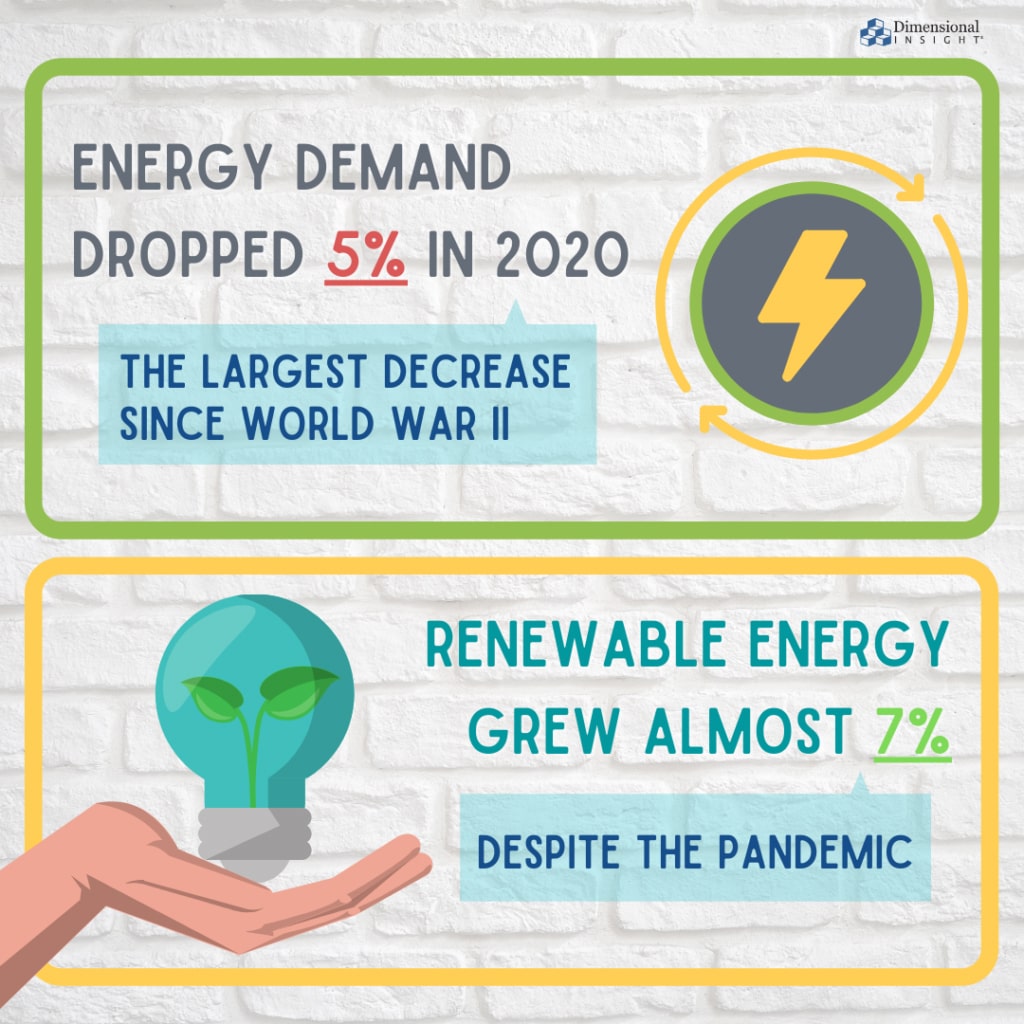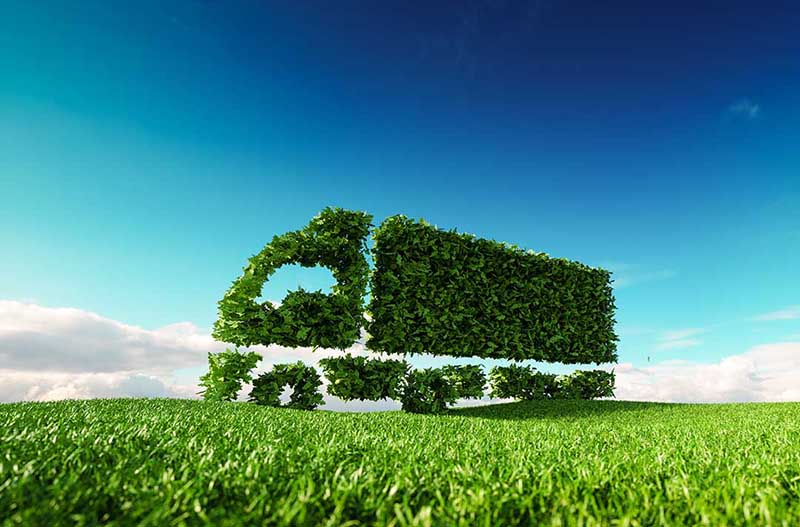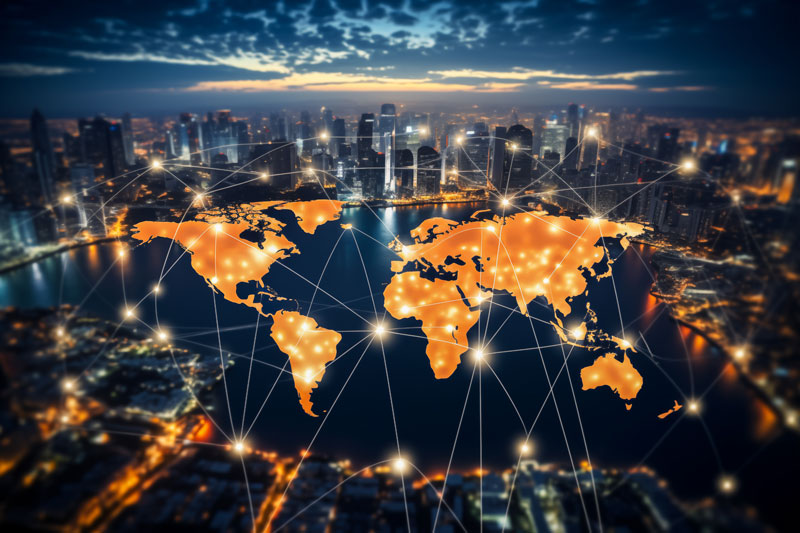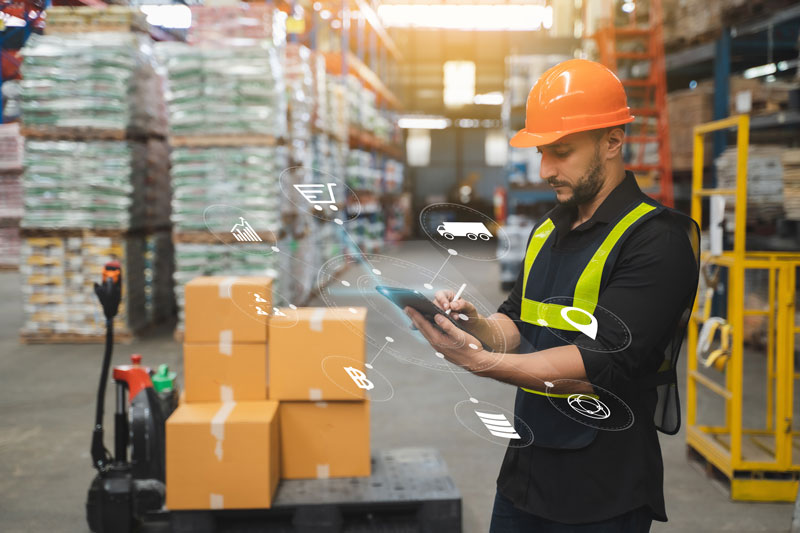Energy, like so many other industries, has experienced a downturn during the pandemic. A report by the International Energy Agency shows energy demand dropping 5% in 2020, the largest decrease since World War II. Renewable energy, though, grew almost 7% despite the pandemic.
Even more growth is expected in 2021, not only because sustainability projects disrupted by the pandemic will be completed, but also because companies are making an ever-increasing effort to be more environmentally friendly. Many companies find themselves in a position where they need to rethink their supply chain in the wake of the pandemic, and they are using that as an opportunity to see where they can work in more sustainable practices.
Using technology to reduce carbon footprints
For many organizations, the changes in the supply chain forced upon them by the pandemic have almost inadvertently reduced their carbon footprint. Making processes more efficient for fewer workers to allow for social distancing ended up being good not only for the bottom line, but also the environment.
Other companies took a more direct approach, though. By utilizing supply chain maps or digital twin technology, companies could identify opportunities to reduce waste, cut down on carbon emissions, and figure out where operations could be conducted closer to home. In many cases, organizations cut down on transportation costs by shipping fewer parts around the world or manufacturing products closer to where they were being bought. For ever-more-environmentally conscious customers, these decisions could end up being as profitable for companies as they are good for the planet.

Minimizing distance
While transportation companies are taking steps to make sure they are as sustainable as possible, with a focus on fuel efficiency in particular, cutting down on transportation is a step that can have the biggest impact for many organizations. For some organizations, cutting all transportation out of the supply chain equation isn’t a feasible solution, but they can make sure they are being as efficient as possible.
Connected order management systems can track products every step along their routes. By having a system in place, as well as increasing the number of times a product is scanned in and out of the warehouse, unnecessary travel, and all the negative impacts associated with it, can be eliminated.
Looking to the future
Sustainability planning happens at every step of the supply chain – including the very beginning of the food supply. Worldwide food production accounts for about 30 percent of total global carbon dioxide emissions, and scientists say changes are needed in order to meet the global warming limits set in the Paris climate agreement. Those could come in the form of everything from changes made in consumers’ diets to policies that come from governments.
In some cases, change requires thinking outside the box. A farm in Massachusetts is looking to buck the trend that solar panels and farmland don’t mix. Often solar panels cover land that could otherwise be used for growing. The unique translucent panels being installed at the Grafton, Massachusetts farm allow for some light to come through for crops beneath the panels that are also absorbing the sun’s energy. For farms around the world looking to make a positive change in carbon emissions, the dual-use solar panels could be a solution for an industry that is in need of creative solutions.
- Summer is an Opportunity for Digital Transformation in Education - April 17, 2024
- Your Car is Tracking More than Miles per Hour - April 11, 2024
- Data Can Help Provide Equal Footing in Cannabis Space - April 3, 2024



